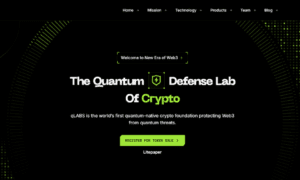Managing IT systems can feel like chasing a moving target. Slow network speeds, outdated servers, and security gaps often leave businesses scrambling to fix issues. These problems don’t just waste time—they cost money too. Studies show that downtime alone can drain thousands of dollars an hour from companies. Keeping everything running smoothly isn’t easy with today’s complex infrastructure. However, there are practical methods to address these challenges effectively. In this blog, you’ll find straightforward steps to enhance your system’s performance. From automating tasks to adopting new tools, we’ll cover the essentials for optimal results. Ready to make IT operate more efficiently? Keep reading!
Key Challenges in Modern IT Infrastructure Management
Managing IT infrastructure is like juggling flaming torches. One misstep can lead to serious problems across systems.
Security concerns
Cybersecurity threats grow daily, targeting the IT infrastructure of all sizes. Hackers take advantage of vulnerabilities in outdated software and neglected systems. Weak passwords and unpatched hardware leave businesses susceptible to cybercriminals.
Ransomware attacks, costing companies billions annually, remain a major threat. A single breach can severely disrupt operations, compromise customer trust, and damage reputation. That’s why many businesses turn to trusted providers like Network 1 Consulting to build strong cyber defenses and proactively address these risks.
IT networks require constant monitoring to identify weak spots quickly. Businesses must implement intrusion detection systems to stay ahead of attackers. Regular patching reduces risks by fixing known issues before they can be exploited.
Investing in effective firewall solutions provides extra protection against unauthorized access attempts. Next comes addressing visibility gaps effectively across your system’s structure for better response times and stronger resilience strategies!
Monitoring and visibility gaps
Gaps in monitoring can leave IT systems unaware of potential threats. Missing data or inadequate tools make it harder to detect and resolve issues. For example, a server may crash because an unnoticed hardware fault went unchecked.
Without real-time tracking, network performance suffers, costing the business time and resources. To close those blind spots, many organizations consult specialists like Generation IX’s cybersecurity experts, who help improve visibility and threat detection across complex infrastructures.
Limited visibility across the IT infrastructure increases risks like downtime or security breaches. Complex infrastructures spread across cloud environments worsen the problem further. Investing in reliable performance monitoring tools provides clarity into weak points. Addressing these gaps helps businesses stay ahead of disruptions while keeping IT operations efficient.
Ensuring compliance across systems
Compliance is no small feat in IT infrastructure. Companies face strict regulations around data management and cybersecurity. Violations can lead to hefty fines or damaged reputations. Standardizing processes across hardware, software, and networks reduces risks. Automating compliance checks simplifies audits and identifies potential issues early. Regular patching keeps systems secure from threats while meeting governance requirements.
Best Practices for IT Performance Optimization
Simplify workflows to save time and reduce errors. Use tools that make infrastructure adaptable to growth or change.
Automate routine tasks and processes
Automating routine tasks saves time and reduces human error. It also allows your IT team to focus on priorities that drive growth.
- Schedule patch management to avoid missing critical updates. Automated tools can manage this smoothly across systems, enhancing cybersecurity.
- Use scripts to handle server optimization tasks like backups or disk cleanup, which often consume manual hours.
- Implement automation for network management checks, such as tracking bandwidth usage and flagging anomalies instantly.
- Set workflows for hardware management, like monitoring performance metrics and scheduling replacements before failures occur.
- Automate alerts in infrastructure monitoring to detect issues early, decreasing downtime risk and financial losses.
- Integrate software management tools that roll out updates across devices without interrupting daily operations.
- Establish automated compliance audits to meet industry regulations while reducing manual oversight.
- Utilize AI-driven systems for system optimization tasks that adjust resources based on real-time needs without intervention.
- Introduce automation in data management processes, such as securing backups or cleaning redundant files regularly.
- Simplify IT operations by automating user requests like password resets using self-service portals.
Automating these areas improves efficiency while maintaining reliable network performance and IT security stability over time.
Implement scalable infrastructure solutions
Develop systems that adjust as your business expands. Plan IT infrastructure to meet current requirements while preparing for future demands. Begin by prioritizing adaptable network management and server improvement methods. Incorporate virtualization technology to enhance efficiency without adding hardware expenses.
Cloud computing provides an effective method to balance workloads and expand resources rapidly. Smaller businesses can increase capacity during busy periods without purchasing more systems. Consistency across tools aids in simplifying maintenance, enhancing cybersecurity, and minimizing downtime risks. Consider future growth with every decision regarding the IT operations setup.
Leverage performance monitoring tools
Track system health in real time with performance tracking tools. Identify bottlenecks before they escalate into bigger problems. These tools help track essential areas like server performance, network systems, and data management.
Set up alerts to receive warnings about unusual behavior or resource spikes. Detecting issues early ensures seamless IT operations and minimizes downtime risks. Reliable tracking enhances cybersecurity by identifying breaches promptly.
Advanced Tools and Technologies for Infrastructure Management
Explore tools that predict issues, bridge gaps, and keep your systems humming smoothly.
Hybrid cloud strategies
Businesses can combine public and private clouds for adaptability and control. Hybrid cloud strategies let companies store sensitive data on private servers while using public clouds for growing demands. This approach balances cost, security, and performance. IT teams manage resources effectively by moving workloads between environments based on needs. It also supports better network improvements and enhances IT operations overall.
AI and machine learning for predictive maintenance
AI predicts equipment failures before they occur. Machine learning examines data patterns from hardware and software systems to identify potential issues early. These technologies help prevent costly downtime by scheduling preventive maintenance. Using AI in IT infrastructure enhances system performance. Algorithms constantly track network performance and server health, detecting inefficiencies automatically. This results in better decisions, improved reliability, and minimized resource waste over time.
Remote IT management software
Remote IT management software helps businesses oversee their IT infrastructure from anywhere. It reduces the need for on-site maintenance by providing tools to monitor network performance, manage patching, and address cybersecurity threats remotely. This simplifies operations and saves time. These solutions support hardware management and software updates across multiple systems. They also improve visibility into IT operations, allowing quicker issue resolution. By incorporating remote tools, companies can maintain efficient workflows while expanding their technology investments effectively.
Common Pitfalls to Avoid in Infrastructure Management
Mistakes in infrastructure management can escalate into costly problems. Remaining vigilant requires identifying issues before they expand.
Overlooking system updates and patches
Failing to apply system patches risks leaving your IT infrastructure vulnerable to cyberattacks. Hackers often exploit outdated software weaknesses within days of discovery. A single unpatched issue can jeopardize sensitive data and interrupt business operations. Routine updates also enhance network performance and stability. Overlooking them may result in slow systems or compatibility problems with newer technologies. Automating patch management saves time while minimizing human error in the process.
Misallocation of resources
Allocating resources poorly wastes time, money, and energy. Overstaffing certain tasks while ignoring critical IT operations creates bottlenecks. This often leaves key areas like server improvements or network performance suffering. Relying on underused hardware management tools drains budgets. Similarly, overinvesting in software systems without proper usage leads to inefficiency. Focus on system demands and invest where the difference is most significant to keep the IT infrastructure running smoothly.
Conclusion
Managing IT infrastructure is no small feat. But the right practices can keep systems running like clockwork. Automate tasks, stay ahead on updates, and use smart tools to monitor performance. Avoiding common pitfalls saves time and stress. Strong management leads to smoother operations and better results.





























